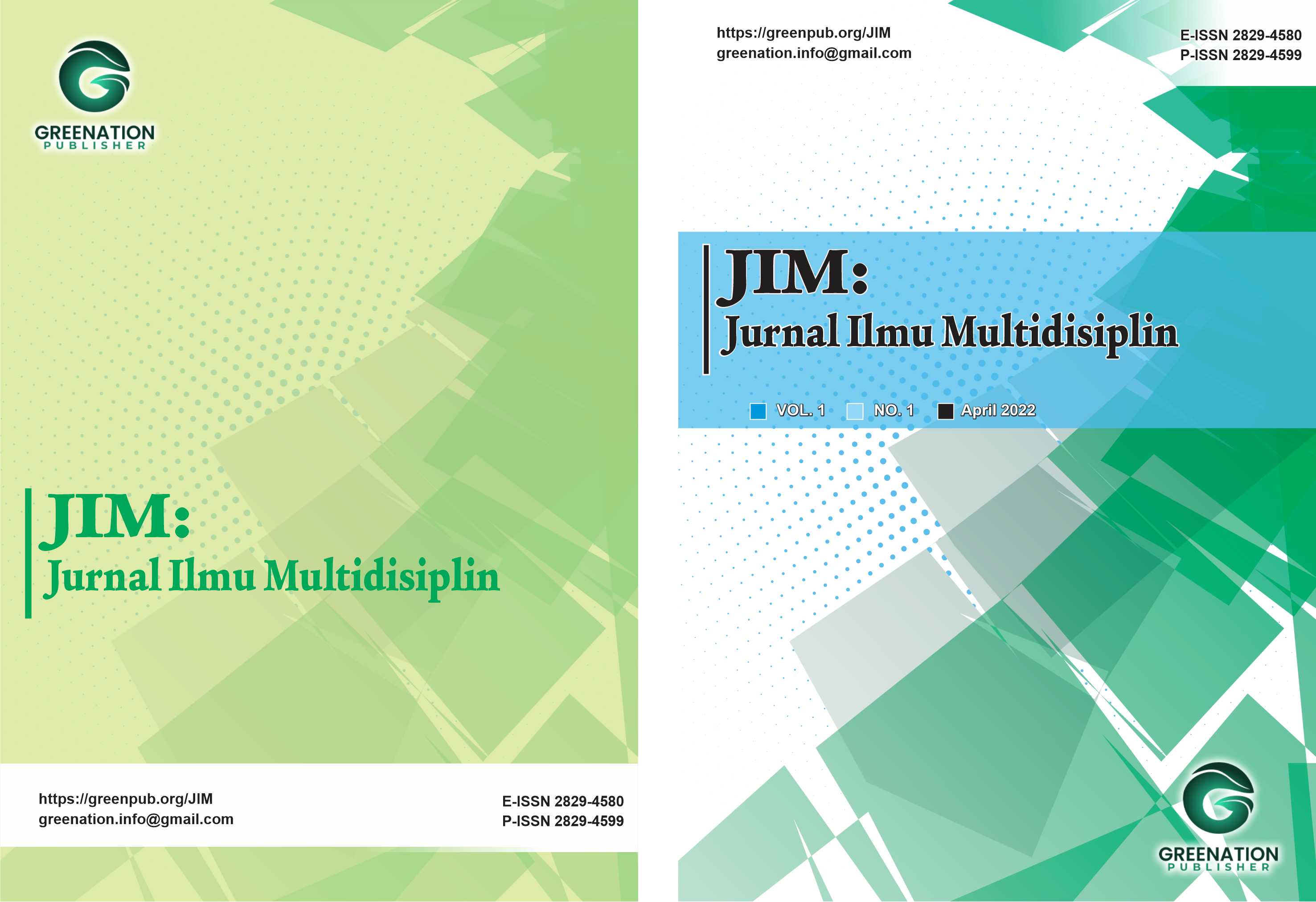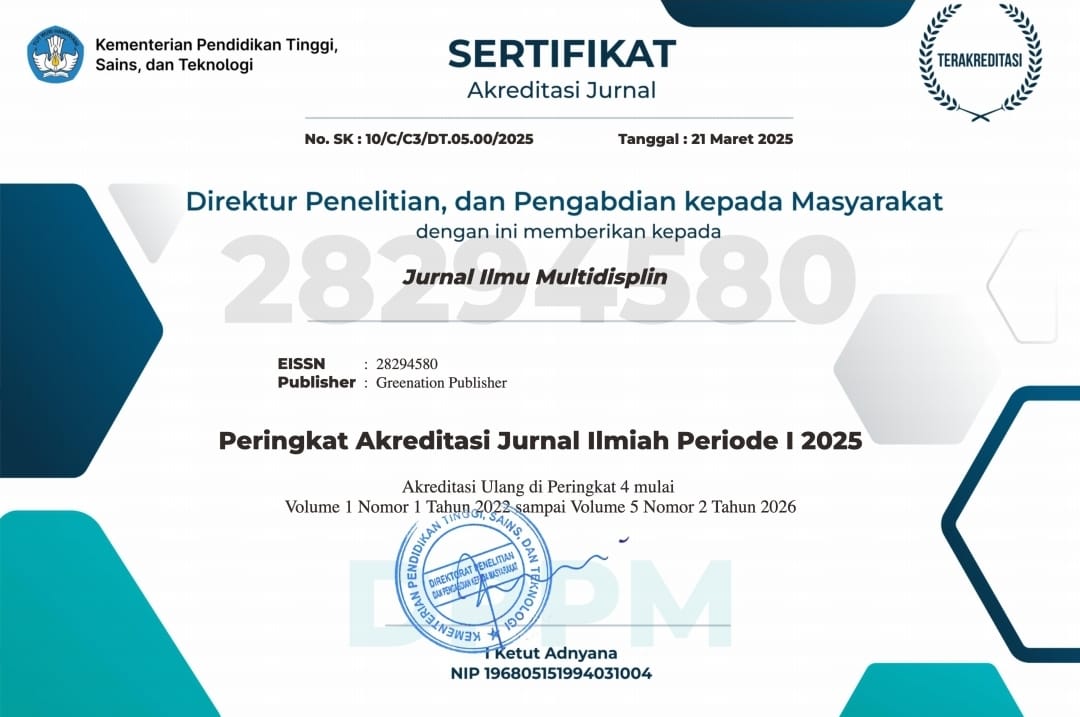Peran Dan Fungsi Sumber Daya Bisnis Intelijen
DOI:
https://doi.org/10.38035/jim.v1i1.38Keywords:
Model Bisnis, Bisnis IntelijenAbstract
Bisnis Intelijen adalah istilah kategori luas yang mencakup teknologi, aplikasi, dan proses untuk mengumpulkan, menyimpan, mengakses, dan menganalisis data untuk memfasilitasi dan meningkatkan pengambilan keputusan. Berdasarkan pengertian tersebut penelitian ini bertujuan untuk membahas dan menganalisi lebih mendalam mengenai peran dan fungsi dari sumberdaya bisnis intelijen dalam beberapa aspek. Metode penulisan artikel ilmiah ini adalah dengan metode kualitatif dan kajian pustaka (Library Research). Peran utama bisnis intelijen adalah kemampuan untuk mengubah data ke dalam informasi. Hal ini memungkinkan perusahaan untuk mengembangkan mekanisme pembuatan yang efisien keputusan, dengan kata lain untuk membuat lebih baik dan keputusan lebih cepat. Manfaatnya bisa penting bagi manajemen perusahaan dalam membuat keputusan strategis, tetapi dapat juga membantu para pemimpin departemen, analis atau anggota lain dari tim yang dihadapi harus mengambil keputusan.
References
Burge, D. L., Boucherle, G., Sarbacker, S. R., Singleton, M., Goldberg, E., Waghorne, J. P., ?, Adi-Da, Alter, J. S., Altglas, V., Beckford, J., Louveau, F., Anandamurti, S. S., Ankerberg, J., Weldon, J., Aravamudan, S., Ash, D., Hewitt, P., Aune, K., … Yoga, A. (2014). Yoga and Kabbalah as World Religions? A Comparative Perspective on Globalization of Religious Resources. In Gurus of Modern Yoga.
Cao, B., Wang, Z., Shi, H., & Yin, Y. (2016). Research and practice on Aluminum Industry 4.0. Proceedings of 6th International Conference on Intelligent Control and Information Processing, ICICIP 2015, 517–521. https://doi.org/10.1109/ICICIP.2015.7388226
Chen, Y., Lee, G. M., Shu, L., & Crespi, N. (2016). Industrial internet of things-based collaborative sensing intelligence: Framework and research challenges. Sensors (Switzerland), 6(2). https://doi.org/10.3390/s16020215
Chesbrough, H., & Rosenbloom, R. S. (2002). The role of the business model in capturing value from innovation: Evidence from Xerox Corporation’s technology spin-off companies. Industrial and Corporate Change, 11(3), 529. https://doi.org/10.1093/icc/11.3.529
Chien, C. F., Hsu, C. Y., & Chen, P. N. (2013). Semiconductor fault detection and classification for yield enhancement and manufacturing intelligence. Flexible Services and Manufacturing Journal, 25(3), 367–388. https://doi.org/10.1007/s10696-012-9161-4
Disler, R. T., Gallagher, R. D., Davidson, P. M., Sun, S.-W., Chen, L.-C., Zhou, M., Wu, J.-H., Meng, Z.-J., Han, H.-L., Miao, S.-Y., Zhu, C.-C., Xiong, X.-Z., Reis, M. S., Sampaio, L. M. M., Lacerda, D., De Oliveira, L. V. F., Pereira, G. B. M., Pantoni, C. B. F., Di Thommazo, L., … Mistraletti, G. (2019). Factors impairing the postural balance in COPD patients and its influence upon activities of daily living. European Respiratory Journal.
Djerdjouri, M. (2019). Data and Business Intelligence Systems for Competitive Advantage: prospects, challenges, and real-world applications. Mercados y Negocios, 1, 5–18. https://doi.org/10.32870/myn.v0i41.7537
Eckerson, W. W. (2010). Performance dashboards: Measuring, monitoring, and managing your business. In Performance Dashboards: Measuring, Monitoring, and Managing Your Business. https://doi.org/10.1002/9781119199984
Foss, N. J., & Saebi, T. (2017). Fifteen Years of Research on Business Model Innovation: How Far Have We Come, and Where Should We Go? Journal of Management, 43(1), 200–227. https://doi.org/10.1177/0149206316675927
García-Gutiérrez, I., & Martínez-Borreguero, F. J. (2016). The innovation pivot framework: Fostering business model innovation in startups. Research Technology Management, 59(5), 48–56. https://doi.org/10.1080/08956308.2016.1208043
Khaleel, H., Conzon, D., Kasinathan, P., Brizzi, P., Pastrone, C., Pramudianto, F., Eisenhauer, M., Cultrona, P. A., Rusina, F., Lukac, G., & Paralic, M. (2017). Heterogeneous applications, tools, and methodologies in the car manufacturing industry through an IoT approach. IEEE Systems Journal. https://doi.org/10.1109/JSYST.2015.2469681
Lee, Haseung, Jung, K., & Park, H. (2021). Study on structural design and analysis of composite boat hull manufactured by resin infusion simulation. Materials, 14. https://doi.org/10.3390/ma14205918
Lee, Hyunjeong, Yoo, S., & Kim, Y. W. (2016). An energy management framework for smart factory based on context-awareness. International Conference on Advanced Communication Technology, ICACT, 685–688. https://doi.org/10.1109/ICACT.2016.7423520
Lee, J., Bagheri, B., & Kao, H. A. (2015). A Cyber-Physical Systems architecture for Industry 4.0-based manufacturing systems. Manufacturing Letters, 3, 18–23. https://doi.org/10.1016/j.mfglet.2014.12.001
Lee, J., Kao, H. A., & Yang, S. (2014). Service innovation and smart analytics for Industry 4.0 and big data environment. Procedia CIRP, 3–8. https://doi.org/10.1016/j.procir.2014.02.001
Lee, R., Chen, I. Y., & Nichols, P. (2016). A novel production process modeling for analytics. International Journal of GEOMATE, 11(2), 2370–2377. https://doi.org/10.21660/2016.24.1245
Maison, Ernawati, M. D. W., Budiarti, R. S., Kurniawan, W., Ningsih, Y., Puspitasari, T. O., Jannah, N., & Putra, D. S. (2019). Learning in nature science: social implications, normality of scientist, attitudes towards investigation of natural science, and interest adds to science learning time. International Journal of Scientific and Technology Research, 8(12), 1478–1484.
Negro, A.R.; Mesia, R. (2020). The Business Intelligence and Its Influence on Decision Making. Journal of Applied Business and Economics, 22, 147–157. https://doi.org/10.33423/jabe.v22i2.2807
Schramm, L. L. (2017). Innovation Technology. In Innovation Technology. https://doi.org/10.1515/9783110429176
Stieglitz, N., & Foss, N. (2015). Business Model Innovation. In Business Model Innovation. https://doi.org/10.1093/acprof:oso/9780198701873.003.0006
Tavassoli, S., & Bengtsson, L. (2016). Does Business Model Innovation lead to higher innovation performance? Academy of Management Proceedings. https://doi.org/10.5465/ambpp.2016.13176abstract
VID/VDE. (2015). Reference Architecture Model Industrie 4.0 (RAMI4.0). Igarss 2014.
Wangoo, D. P. (2020). Intelligent software mining with business intelligence tools for automation of micro services in SOA: A use case for analytics. Proceedings of the 7th International Conference on Computing for Sustainable Global Development, INDIACom 2020. https://doi.org/10.23919/INDIACom49435.2020.9083682
Zhao, L. (2019). Business intelligence application of enhanced learning in big data scenario. Proceedings - International Joint Conference on Information, Media, and Engineering, IJCIME 2019. https://doi.org/10.1109/IJCIME49369.2019.00038
Downloads
Published
How to Cite
Issue
Section
License
You are free to:
- Share— copy and redistribute the material in any medium or format
- Adapt— remix, transform, and build upon the material for any purpose, even commercially.
The licensor cannot revoke these freedoms as long as you follow the license terms.
Under the following terms:
- Attribution— You must give appropriate credit, provide a link to the license, and indicate if changes were made. You may do so in any reasonable manner, but not in any way that suggests the licensor endorses you or your use.
- No additional restrictions— You may not apply legal terms or technological measures that legally restrict others from doing anything the license permits.
Notices:
- You do not have to comply with the license for elements of the material in the public domain or where your use is permitted by an applicable exception or limitation.
- No warranties are given. The license may not give you all of the permissions necessary for your intended use. For example, other rights such as publicity, privacy, or moral rightsmay limit how you use the material.




























